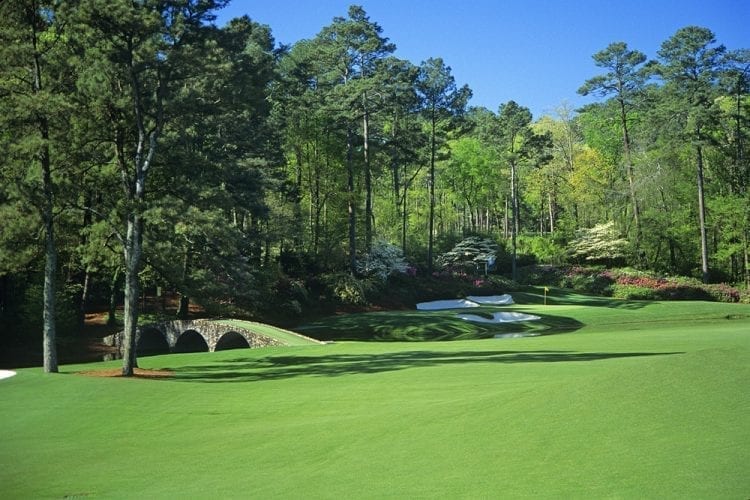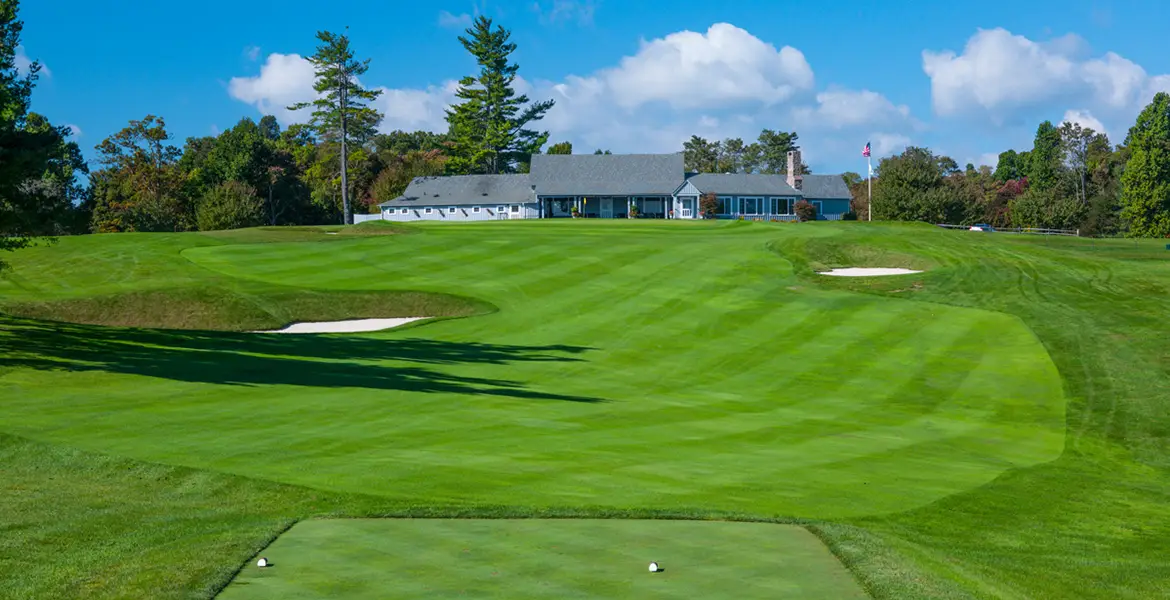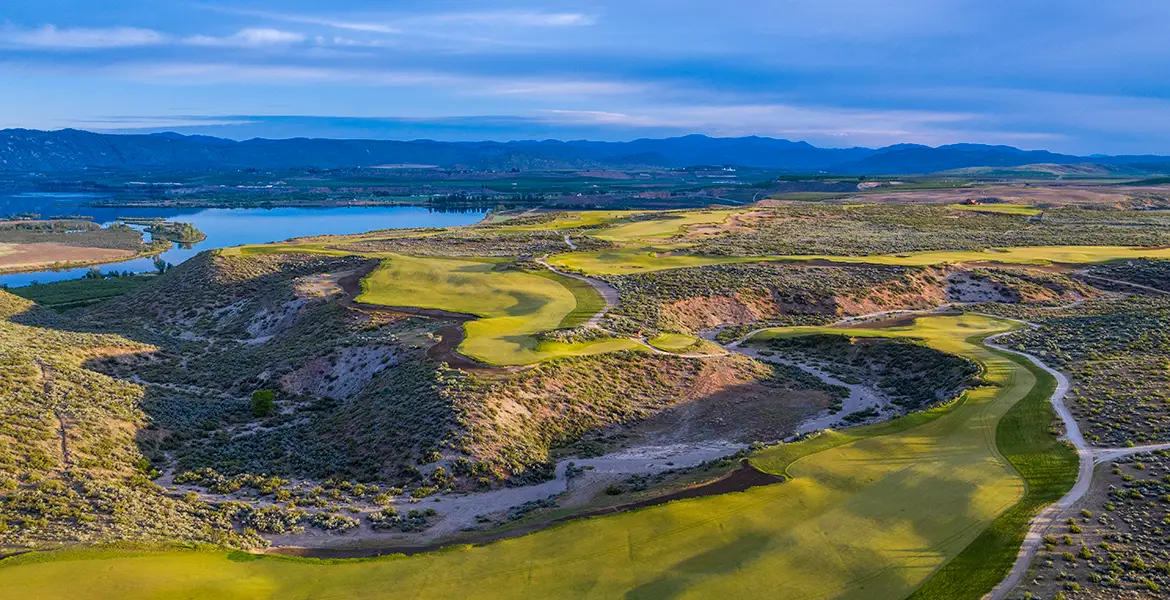
When Augusta National opened for play in December 1932, its design could hardly be called classic. Radical would be the better word. It looked nothing like any of Earth’s greatest championship tests. It wasn’t shaggy and windblown, like the majority of the top tracks in the British Isles. It wasn’t narrow and small, as with most of the U.S. Open-type courses in the northeast. It wasn’t bunkered to the extreme, as was the case with America’s five previously most acclaimed creations: Oakmont, which appeared in 1903; National Golf Links (1911); Pebble Beach (1919); Pine Valley (1922); and Cypress Point (1928).
What it possessed was two of golf’s most capable minds behind its design: Bobby Jones, the game’s most talented and cerebral player, and his architectural counterpart, Dr. Alister MacKenzie. Together, they transformed conventional wisdom about what makes for an ideal golf course.
No longer would the existing standard call for pure brawn or bow-and-arrow accuracy to “overcome” a golf course. In the minds of Jones and MacKenzie strategy was all-important. Somehow, they crafted a course that would continually beguile the game’s most skilled practitioners in tournament competition, yet left it soft enough that a talented club member could negotiate most of its holes using only a putter from start to finish. Therein lies its genius. Take away every Masters Tournament ever played and take away the drop-dead gorgeous aesthetics we’re treated to every spring, and what you’re left with still is one of America’s greatest courses – and one of golf’s ultimate classic courses.
Jones and MacKenzie were quick to give credit to the other for the wildly successful design of Augusta National, but in reality, the course is a reflection of the architectural philosophies of both men. Their common bond was a mutual love of the Old Course at St. Andrews, Scotland. At St. Andrews, the premium is on thoughtful, strategic play. Rough, bunkers and water hazards on the Old Course are utilized in such a way as to offer the golfer a series of meaningful risk/reward decisions, not merely to punish him for an errant shot.
Of the Old Course, MacKenzie wrote in 1933, “Is there any course in the world that presents such subtle, strategic problems? There are thousands of golfers who have played St. Andrews for years and have failed to solve them or even see them. …During the last 30 years there have been many good courses constructed in Britain and the United States, but to my mind none of them provide holes with such interesting strategic problems as these natural holes at St. Andrews.”
Thus, it was clear from the beginning that when Jones and MacKenzie set out to construct the ideal golf course, it would not only have to be natural and beautiful, but it would also be infused with the design tenets – countless subtleties and options – that characterized the Old Course. As time has proven, they succeeded brilliantly.
Admittedly, the piece of property from which Augusta National was hewn had all the attributes that would one day yield a classic course. The terrain tumbled in vast, broad sweeps providing for maximum variety, as holes could be draped across the rolling acreage in numerous ways. This expansiveness allowed for roomy fairway corridors when the holes were routed, giving middle-and high-handicap golfers a pleasant, unrestricted feeling of being able to swing away amid a wide swath of parkland. The wide-open canvas was just what the architects sought in attempting to craft a playing field that offered as many strategic possibilities as were found at St. Andrews.
MacKenzie designed the course in adherence to his 13 general principles of architecture, which he had penned in 1920, some 10 years before he ever saw Augusta. One of those principles was,
“The emphasis should be placed on natural beauty, not on artificial features.” As nearly everyone knows, Augusta National was built on a site of a former commercial nursery. In April it is far and away the world’s most beautiful inland golf course. Flowering peach and crabapple trees mix with tall fragrant pines. Magnolias are scattered throughout the course, though they don’t bloom until May or June. In full bloom come April are the pink and white dogwoods, redbud, camellia, and Fourth-of-July-type bursts of azaleas.
In addition to being a topographical and visual treat, Augusta National is a strategic wonder as well. Three other 1920 MacKenzie design principles illuminate the emphasis he put on strategy and playability for all golfers. First, “A course should have a mix of long par-4s, drive-and-pitch holes and at least four par-3s.” Second, “There should be a complete absence of the annoyance caused by searching for lost balls.” And third, “There is always an alternative route for the weaker player, yet a sufficient test for the plus-handicap player.”
As to the first principle, Augusta is balanced almost perfectly in terms of yardages, though in truth, the long par-4s don’t play nearly as long as they were designed to, owing to developments in golf equipment and course maintenance. As to the second, a round at Augusta is a joy for members because of the virtual absence of rough, let alone overly penal wetlands or water hazards. And as for the third of MacKenzie’s principles, nearly every hole offers the weaker player a way around the trouble to make a comfortable bogey or even a par, yet if the scratch player wishes to extract a birdie on any of the 18 holes, he’ll have to flirt with some sort of peril. Of course, Augusta National also offers a set of greens that serves as a great equalizer for players of all abilities.
Nevertheless, when most people think of Augusta National, they don’t really think of touch or power or strategy. They think of water hazards and flowers and the climb up the 18th fairway. They think of the back nine.
Bobby Jones actually believed that the front side was more demanding than the back, and that remains true today. But no sequence of holes in the world gets the pulse racing – whether you’re playing or watching – as Augusta’s back nine. Endless risks can pay off with multiple rewards – or numerous opportunities for failure. The beauty is that the shot values – and excitement factor – remain the same regardless of what kind of player you are. This is especially true at “Amen Corner: (the 11th, 12th and 13th holes), so coined by esteemed writer Herbert Warren Wind in 1958.
The Masters tee at the 11th measures 455 yards, but it’s a mere 345 yards from the members’ tee, wide open and downhill. From this tee, you could just blast away with the driver, but if you fade into the trees, you’re in deep trouble. Likewise, if you put it 30 to 70 yards from the green, you risk an awkward, “in-between” pitch from a tight downhill lie to a pond-guarded green. Even if you lay well back, do you risk an approach over the water right at the flag, or should you bail out somewhat safely to the right, only to face a scary, speedy, curving chip or putt across the green, with water beyond? It’s perfect, strategic, thinking man’s golf.
At 145 yards, the amazing par-3 12th measures just 10 yards shorter for the members that it does for the pros, but even at that yardage, it’s well within most players’ reach. That’s when the fun starts. As Arnold Palmer once said, “The only way to survive No.12 is to come up with a shot that will carry the ball over the water and stop it somewhere on the putting surface. That isn’t much of a problem on a calm day but when the winds are swirling, which is about 95 percent of the time, it can give you the shakes just standing on the tee.” Again, Jones and MacKenzie provided a come-hither little hole that can be conquered by anybody – or be messed up by everybody, as the task at hand is as much mental as it is physical.
Perhaps the 13th hole is the most memorable of all. Thirteen curves hard to the left around thick woods and alongside a tributary of Rea’s Creek. The par-5 hole measures just 485 yards for the pros, 455 for the members, but not surprisingly, it’s rife with adventure and risk/reward opportunities. Obviously, the temptation is to be home in two shots. It can be done, but let’s outline the choices at hand. To obtain optimum position to go for the green in two, you’re going to have to smack a hard, drawing drive. Push it a shade and you’ll drive through the fairway, into a small grouping of tall pines. Turn your drive over too quickly in an effort to hook it and you’ll wind up in dense tree thickets or in the creek.
You now face one of the most intriguing and spectacular approaches in golf. If you favored the right side (the safer play off the tee), you’re staring at a shot from 180 to 240 yards, with the ball slightly above your feet. It’s easy to yank it or hit it slightly fat from this lie, both of which will put you in a creek that curls in front of the green. The riskier drive is up the left side, with the reward a flatter lie for your second.
Remember, all classes of players can choose to play the 13th as a true three-shotter, laying safely well back off the tee. However, more options await even for these players. The massive green must be approached from exactly the right spot, both in distance and angle, even on a short third. The left half of the green sits higher than the right, so if the pin is tucked front-right, just beyond the winding brook, you’re going to need to hit a full shot in from the fairway with maximum spin. Thus, your second-shot layup position is crucial.
Any approach hit to the left will find a deep, grassy swale, which leaves a host of chipping possibilities ranging from interesting to impossible, depending on the hole location. Still, it’s better than a miss to the right, which will splash. An approach that runs through the green is jail in the form of four huge, gorgeous bunkers, a profusion of azaleas and a forested hillside.
Ben Crenshaw calls the 13th “perhaps the finest natural hole in golf. …It’s truly unique in that it encompasses each of the three schools of golf course architecture: strategic, penal and heroic.” Somehow, that was exactly what Bobby Jones and Alister Mackenzie had in mind when designing their ideal golf course. They both shared the goal of maximizing enjoyment and minimizing frustration for the club player, while keeping things lively for the tournament golfer. To do this, they asked for certain placement of tee shots to provide better angles onto the greens. They then introduced subtleties on and around the putting surfaces that forever rendered the course a strong test for good players.
In essence, Jones and MacKenzie took the design ideals of St. Andrews and set them down on the most noble and spectacular inland golf course setting of them all. The result is August National, America’s true classic course.






